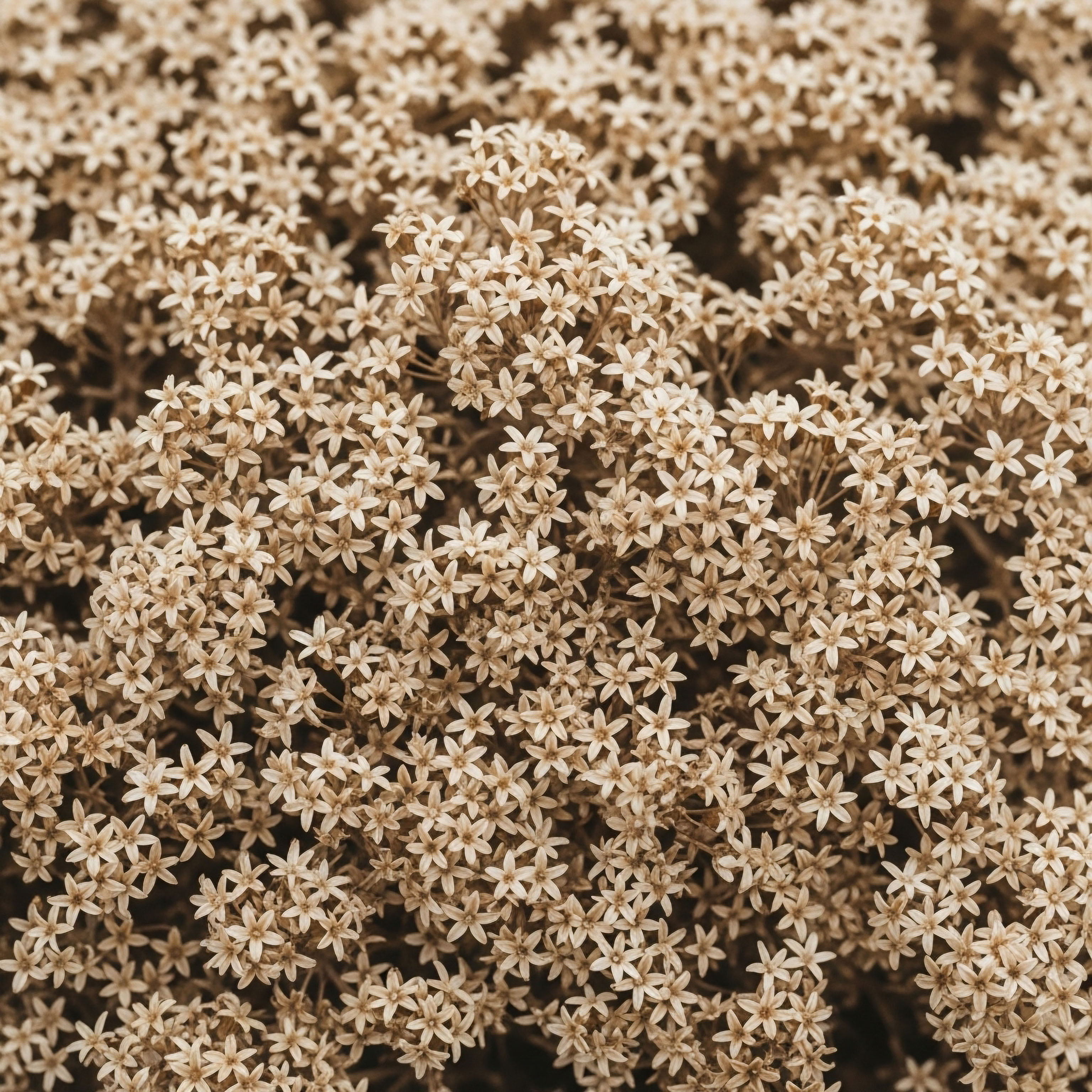

Fundamentals
Experiencing shifts in your vitality, noticing changes in your energy levels, or grappling with an altered sense of well-being can be disorienting. Many individuals encounter these subtle yet significant alterations as life progresses, often attributing them to the natural course of aging or daily stressors.
Yet, these feelings frequently signal deeper conversations within your biological systems, particularly your intricate endocrine network. Understanding these internal communications, these biochemical whispers and shouts, is the initial step toward reclaiming a vibrant, functional existence. It is about recognizing that your body possesses an innate intelligence, a capacity for balance that can be supported and recalibrated.
Within this complex internal landscape, tiny messengers called peptides play a pivotal role. These short chains of amino acids act as biological signals, orchestrating a vast array of physiological processes, from regulating growth and metabolism to influencing mood and repair mechanisms.
When these crucial messengers are introduced as therapeutic agents, they often arrive in a stable, dormant state, a fine powder that preserves their delicate structure and activity. This form, known as lyophilized powder, is the result of a specialized freeze-drying process that removes water, preventing degradation and extending shelf life.
Peptides, as biological messengers, often arrive in a stable, freeze-dried powder form, requiring careful preparation for therapeutic use.
The transformation of this dormant powder into an active, injectable solution is a precise process known as reconstitution. This procedure involves adding a specific liquid, a diluent, to the lyophilized peptide vial. The diluent must be chosen with utmost care to ensure the peptide dissolves correctly, maintains its structural integrity, and remains safe for administration. The choice of diluent is not arbitrary; it directly impacts the stability, potency, and safety of the final solution.
A primary consideration for peptide reconstitution is the use of bacteriostatic water. This specialized water contains a small percentage of a preservative, typically benzyl alcohol, which inhibits the growth of bacteria and other microorganisms. Regular sterile water, while free of contaminants initially, lacks this preservative and becomes susceptible to bacterial proliferation once opened or exposed to air.
The presence of benzyl alcohol in bacteriostatic water extends the shelf life of the reconstituted peptide solution, allowing for multiple doses to be drawn from a single vial over a period, usually up to 28 days, while maintaining sterility and efficacy.

Why Bacteriostatic Water Is Essential
The integrity of any therapeutic peptide hinges on its purity and stability. Introducing contaminants during the reconstitution process can compromise the peptide’s effectiveness and pose health risks. Bacteriostatic water provides a controlled, sterile environment for the peptide to dissolve. The benzyl alcohol acts by disrupting the cell membranes of microorganisms, preventing their multiplication without necessarily destroying them outright.
This bacteriostatic action is crucial for multi-dose vials, where the rubber stopper is pierced multiple times for successive withdrawals. Without this preservative, each needle insertion could introduce bacteria, leading to contamination and potential degradation of the peptide.
Consider the analogy of a carefully calibrated internal thermostat. Your body constantly adjusts its temperature, blood sugar, and hormone levels to maintain a narrow range of balance. Introducing a therapeutic agent, especially a delicate peptide, requires precision.
The reconstitution process is the first critical step in ensuring that the signal you are sending to your body is clear, accurate, and free from interference. Any deviation in this initial preparation can lead to an unreliable signal, potentially diminishing the desired physiological response or introducing unwanted effects.

Key Supplies for Safe Reconstitution
Performing peptide reconstitution safely and effectively requires a specific set of sterile supplies. Gathering these items before beginning the process helps maintain a sterile field and prevents errors.
- Lyophilized Peptide Vial ∞ The sealed container holding the freeze-dried peptide powder.
- Bacteriostatic Water Vial ∞ The diluent, typically containing 0.9% benzyl alcohol.
- Sterile Syringes ∞ Separate syringes for drawing the diluent and for administering the peptide. Insulin syringes are often used for subcutaneous injections due to their fine needles and precise measurement markings.
- Alcohol Swabs ∞ For disinfecting vial stoppers and injection sites.
- Sharps Container ∞ A rigid, puncture-resistant container for safe disposal of used needles and syringes.
- Clean Workspace ∞ A sanitized surface free from dust and clutter.
Each component plays a role in minimizing the risk of contamination and ensuring the peptide’s integrity. The careful handling of these supplies underscores the importance of precision in personalized wellness protocols.


Intermediate
Moving beyond the foundational understanding of peptides and their initial state, we now consider the practical application of reconstitution, a process demanding meticulous attention to detail. The ‘how’ of preparing these delicate biological agents for administration is as important as the ‘why’ behind their therapeutic use. This section will guide you through the precise steps involved, emphasizing the clinical rationale for each action, and connecting it to the broader landscape of hormonal optimization.

The Reconstitution Protocol
The act of reconstituting a peptide is a sterile procedure, akin to a mini-laboratory exercise performed with utmost care. The goal is to dissolve the lyophilized powder completely and uniformly into the bacteriostatic water, creating a stable solution ready for precise dosing.
- Preparation of the Environment ∞ Begin by thoroughly washing your hands with soap and water. Sanitize your workspace with an alcohol-based cleaner. This creates a clean field, reducing the risk of introducing airborne contaminants.
- Vial Disinfection ∞ Before piercing any rubber stopper, wipe the tops of both the peptide vial and the bacteriostatic water vial with separate alcohol swabs. Allow the alcohol to air dry completely. This step eliminates surface bacteria that could otherwise be pushed into the vial by the needle.
- Drawing the Diluent ∞ Using a sterile syringe, carefully draw the desired volume of bacteriostatic water. The volume needed depends on the peptide’s concentration and the desired final concentration for dosing. Precision here is paramount for accurate subsequent dosing.
- Injecting into the Peptide Vial ∞ Insert the needle into the peptide vial, aiming for the side of the vial rather than directly onto the powder. Slowly and gently depress the plunger, allowing the bacteriostatic water to flow down the inner wall of the vial. This technique prevents foaming or splashing, which can damage the delicate peptide structure.
- Gentle Dissolution ∞ Once the diluent is added, do not shake the vial vigorously. Instead, gently swirl or roll the vial between your palms. This allows the peptide powder to dissolve gradually and completely. Shaking can introduce air bubbles and potentially denature the peptide, compromising its biological activity.
- Visual Inspection ∞ After gentle swirling, visually inspect the solution for any undissolved particles or cloudiness. A properly reconstituted peptide solution should be clear and free of visible particulate matter. If particles remain, continue gentle swirling until complete dissolution is achieved.
- Labeling and Storage ∞ Immediately label the reconstituted vial with the peptide name, concentration, date of reconstitution, and expiration date. Store the vial in a refrigerator, typically at 2-8°C (36-46°F). Most reconstituted peptides maintain potency for approximately 28 days when refrigerated, though specific peptides may have shorter or longer stability profiles. Avoid freezing and thawing cycles if the peptide is intended for multi-dose use, as this can degrade the peptide.

How Does Reconstitution Impact Peptide Stability?
The stability of a peptide refers to its ability to maintain its chemical integrity and biological activity over time. Lyophilized peptides are inherently more stable due to the absence of water, which minimizes hydrolysis and microbial growth. Once reconstituted, however, the peptide is in a solution, making it more susceptible to degradation. Factors influencing this stability include ∞
- Temperature ∞ Elevated temperatures accelerate degradation. Refrigeration slows down molecular movement and chemical reactions, preserving the peptide’s structure.
- pH ∞ The pH of the reconstituted solution can significantly affect peptide stability. Peptides have optimal pH ranges where they are most stable. Bacteriostatic water typically has a neutral pH, which is generally suitable for most peptides.
- Amino Acid Composition ∞ Certain amino acid residues within a peptide sequence are more prone to degradation pathways like oxidation or deamidation.
- Presence of Preservatives ∞ Benzyl alcohol in bacteriostatic water prevents microbial contamination, a common cause of degradation in multi-dose vials.
- Light Exposure ∞ Some peptides are photosensitive and can degrade when exposed to light. Storing reconstituted peptides in amber vials or away from light sources helps preserve their activity.
The careful management of these variables ensures that the peptide retains its therapeutic potential throughout its usable life. This attention to detail directly supports the efficacy of hormonal optimization protocols.

Connecting Reconstitution to Clinical Protocols
The precision of peptide reconstitution directly underpins the effectiveness of various personalized wellness protocols. Consider the application of Growth Hormone Peptide Therapy, which utilizes peptides like Sermorelin, Ipamorelin/CJC-1295, Tesamorelin, and Hexarelin. These peptides are growth hormone secretagogues, meaning they stimulate the body’s own pituitary gland to release growth hormone in a pulsatile, physiological manner.
For individuals seeking benefits such as improved body composition, enhanced recovery, better sleep quality, or anti-aging effects, accurate dosing of these peptides is critical. If a peptide is improperly reconstituted, the actual dose administered could be significantly different from the intended dose, leading to suboptimal results or unexpected responses. The body’s endocrine system operates on a delicate feedback loop; a precise signal from a correctly prepared peptide ensures the desired physiological cascade.
Accurate peptide reconstitution is vital for effective growth hormone peptide therapy, ensuring precise dosing and optimal physiological responses.
Similarly, in the realm of sexual health, peptides such as PT-141 (Bremelanotide) are gaining recognition. PT-141 works by activating melanocortin receptors in the brain, influencing sexual desire and arousal through central nervous system pathways, distinct from traditional vascular-acting medications. Administered via subcutaneous injection, its efficacy relies entirely on the accurate reconstitution of the lyophilized powder. An imprecise concentration could lead to either insufficient therapeutic effect or an increased likelihood of side effects.
For tissue repair and recovery, Pentadeca Arginate (PDA) offers promise. This peptide supports angiogenesis, reduces inflammation, and promotes collagen synthesis, aiding in the healing of muscles, tendons, and other tissues. Athletes and individuals recovering from injuries often utilize PDA to accelerate their recuperation. The consistent and accurate delivery of PDA, facilitated by proper reconstitution, is essential for stimulating the body’s regenerative processes effectively.
Even in traditional hormonal optimization protocols, such as Testosterone Replacement Therapy (TRT), the principles of reconstitution and dilution are relevant. While Testosterone Cypionate is typically an oil-based solution, sometimes dilution is necessary for specific dosing requirements, particularly in female hormone balance protocols where very low doses are used. The meticulous preparation of these solutions, whether reconstitution of a powder or dilution of a liquid, ensures consistent and predictable physiological responses.
The table below provides a general overview of common peptides and their typical reconstitution considerations. Always consult specific manufacturer guidelines for precise instructions.
| Peptide Name | Primary Therapeutic Area | Typical Diluent | General Reconstitution Ratio (mg/mL) | Storage After Reconstitution |
|---|---|---|---|---|
| Sermorelin | Growth Hormone Support | Bacteriostatic Water | 1-5 mg/mL | Refrigerated (2-8°C) for 28 days |
| Ipamorelin / CJC-1295 | Growth Hormone Support | Bacteriostatic Water | 1-5 mg/mL | Refrigerated (2-8°C) for 28 days |
| Tesamorelin | Growth Hormone Support | Bacteriostatic Water | 1-2 mg/mL | Refrigerated (2-8°C) for 28 days |
| Hexarelin | Growth Hormone Support | Bacteriostatic Water | 1-5 mg/mL | Refrigerated (2-8°C) for 28 days |
| MK-677 (Ibutamoren) | Growth Hormone Support (Oral) | N/A (Oral Solution/Capsule) | N/A | Room Temperature (as directed) |
| PT-141 (Bremelanotide) | Sexual Health | Bacteriostatic Water | 5-10 mg/mL | Refrigerated (2-8°C) for 28 days |
| Pentadeca Arginate (PDA) | Tissue Repair, Inflammation | Bacteriostatic Water | 2-5 mg/mL | Refrigerated (2-8°C) for 28 days |
| Gonadorelin | Hormonal Axis Testing/Support | Sterile Water for Injection | 0.1 mg/mL | Refrigerated (2-8°C) for 24 hours |
The diligent execution of these reconstitution steps ensures that the therapeutic agents maintain their intended potency, allowing for a predictable and beneficial physiological response. This level of care is a cornerstone of personalized wellness, where every detail contributes to the overall success of a health protocol.


Academic
Delving into the intricate mechanisms of peptide reconstitution and its systemic implications requires a sophisticated understanding of biochemistry, pharmacology, and endocrinology. The act of transforming a lyophilized peptide into an active solution is not merely a procedural step; it is a critical determinant of the molecule’s ultimate biological fate and therapeutic efficacy. This section explores the deeper scientific considerations, connecting the micro-level events of reconstitution to the macro-level impact on hormonal health and metabolic function.

Molecular Stability and Degradation Pathways
Peptides, by their very nature, are susceptible to various degradation pathways once dissolved in an aqueous environment. The primary mechanisms include hydrolysis, oxidation, and deamidation. Hydrolysis involves the cleavage of peptide bonds by water molecules, leading to fragmentation. Oxidation, particularly of methionine, cysteine, and tryptophan residues, can alter the peptide’s conformation and reduce its activity. Deamidation, often occurring at asparagine and glutamine residues, results in a change in charge and can affect receptor binding.
The lyophilization process is designed to mitigate these risks by removing water, thereby arresting hydrolytic reactions and reducing molecular mobility. However, upon reconstitution, the peptide is re-exposed to an aqueous environment, and the clock on its solution stability begins. The choice of diluent, specifically bacteriostatic water, plays a crucial role in managing this inherent instability. The benzyl alcohol acts as a preservative, preventing microbial growth that could otherwise introduce enzymes capable of degrading the peptide.
Furthermore, the manner of reconstitution itself influences stability. Rapid injection of diluent directly onto the peptide powder, or vigorous shaking, can induce shear stress and foaming. This mechanical stress can lead to protein aggregation or denaturation, where the peptide loses its specific three-dimensional structure essential for biological activity. The gentle swirling method is therefore not just a recommendation; it is a scientifically grounded practice to preserve the peptide’s native conformation and ensure its full therapeutic potential.

Pharmacokinetic and Pharmacodynamic Considerations
The journey of a reconstituted peptide from administration to its therapeutic effect involves complex pharmacokinetic (what the body does to the drug) and pharmacodynamic (what the drug does to the body) processes. For most therapeutic peptides, including those used in hormonal optimization, subcutaneous injection is the preferred route due to its ease of self-administration and relatively consistent absorption.
Upon subcutaneous injection, the reconstituted peptide enters the interstitial fluid of the hypodermis. Here, it encounters various proteolytic enzymes that can cause catabolism, breaking down the peptide into smaller fragments or amino acids. The rate and extent of this degradation influence the peptide’s bioavailability and its effective half-life. The concentration achieved through accurate reconstitution directly impacts the initial systemic exposure and the subsequent interaction with target receptors.
Peptide reconstitution directly influences bioavailability and therapeutic impact by managing molecular stability and optimizing pharmacokinetic profiles.
Consider the growth hormone secretagogues (GHSs) like Sermorelin or Ipamorelin. These peptides bind to specific receptors on somatotroph cells in the anterior pituitary gland, stimulating the pulsatile release of endogenous growth hormone (GH). The pharmacodynamic response ∞ the magnitude and pattern of GH release ∞ is highly dependent on the precise concentration of the administered peptide.
An under-dosed or degraded peptide may fail to adequately stimulate the pituitary, leading to a suboptimal GH response and diminished clinical benefits, such as reduced improvements in body composition or sleep architecture.
Conversely, an over-concentrated solution, perhaps due to reconstitution error, could lead to supraphysiological levels of GH, potentially increasing the risk of side effects like insulin resistance or fluid retention. This highlights the critical interplay between accurate reconstitution, systemic exposure, and the physiological feedback loops that govern hormonal balance.

Interconnectedness with the Endocrine System
The therapeutic application of reconstituted peptides is deeply intertwined with the broader endocrine system, often influencing multiple axes simultaneously. For instance, Gonadorelin, a synthetic analog of gonadotropin-releasing hormone (GnRH), directly stimulates the anterior pituitary to release luteinizing hormone (LH) and follicle-stimulating hormone (FSH). This forms the cornerstone of the Hypothalamic-Pituitary-Gonadal (HPG) axis, which regulates reproductive function and sex hormone production.
In men, LH stimulates Leydig cells in the testes to produce testosterone, while FSH supports spermatogenesis. In women, LH and FSH regulate ovarian function, including estrogen and progesterone production and ovulation. The precise reconstitution and administration of Gonadorelin are essential for diagnostic testing of this axis or for therapeutic interventions aimed at stimulating endogenous hormone production, such as in certain fertility protocols or post-TRT recovery. An inaccurate dose could lead to misdiagnosis or ineffective stimulation of the HPG axis.
Similarly, the use of Anastrozole in conjunction with testosterone therapy, particularly in men to manage estrogen conversion or in women receiving testosterone pellets, demonstrates the intricate balance within the endocrine system. Anastrozole, an aromatase inhibitor, reduces the conversion of androgens to estrogens.
While not reconstituted in the same manner as peptides, its precise dosing is critical to maintaining an optimal testosterone-to-estrogen ratio, preventing estrogen-related side effects while maximizing the benefits of testosterone. This underscores the need for a holistic view of hormonal health, where each intervention, including the foundational step of reconstitution, impacts the entire system.
The therapeutic landscape also includes agents like Enclomiphene, a selective estrogen receptor modulator (SERM). Enclomiphene acts at the pituitary, blocking estrogen’s negative feedback, thereby increasing endogenous LH and FSH secretion. This leads to increased natural testosterone production in men, offering an alternative to exogenous testosterone administration, particularly for those desiring to preserve fertility. The precise oral dosing of enclomiphene, while not involving reconstitution, reflects the same principle of delivering a targeted signal to recalibrate the HPG axis.
The following table illustrates the complex interplay of various hormones and peptides within the endocrine system, highlighting how targeted interventions, including those involving reconstituted peptides, aim to restore physiological balance.
| Hormone/Peptide | Primary Gland/Source | Key Target/Mechanism | Clinical Relevance (Reconstitution Context) |
|---|---|---|---|
| Gonadorelin (GnRH) | Hypothalamus (Synthetic) | Stimulates LH/FSH release from pituitary | Diagnostic testing of HPG axis; fertility support; post-TRT recovery. Requires precise reconstitution. |
| Luteinizing Hormone (LH) | Anterior Pituitary | Stimulates testosterone production (men); ovulation (women) | Endogenous hormone influenced by Gonadorelin and Enclomiphene. |
| Follicle-Stimulating Hormone (FSH) | Anterior Pituitary | Supports spermatogenesis (men); follicular development (women) | Endogenous hormone influenced by Gonadorelin and Enclomiphene. |
| Testosterone | Testes (men), Ovaries/Adrenals (women) | Androgenic and anabolic effects; influences libido, muscle mass, bone density | TRT protocols (men/women); often involves precise dosing of oil-based solutions or pellets. |
| Anastrozole | Exogenous (Aromatase Inhibitor) | Blocks conversion of androgens to estrogens | Manages estrogen levels in TRT; used with testosterone pellets in women. |
| Progesterone | Ovaries (Corpus Luteum), Adrenals | Regulates menstrual cycle, supports pregnancy, neuroprotective effects | Perimenopausal symptom management; endometrial protection. |
| Growth Hormone (GH) | Anterior Pituitary | Promotes growth, metabolism, body composition | Stimulated by GHS peptides (Sermorelin, Ipamorelin); requires precise reconstitution. |
| Ghrelin | Stomach (Endogenous) | Stimulates GH release; influences appetite | Endogenous ligand for GH secretagogue receptor; mimicked by some GHS peptides. |
The meticulous process of reconstituting peptides, therefore, is not an isolated laboratory task. It is a foundational step in a sophisticated clinical strategy aimed at restoring and optimizing the delicate balance of the human endocrine system. The precision applied at this initial stage directly translates into the safety, efficacy, and predictability of therapeutic outcomes, allowing individuals to experience a profound recalibration of their vitality and function.

Ensuring Quality and Safety in Peptide Handling
Beyond the immediate act of reconstitution, maintaining the quality and safety of peptide solutions requires ongoing vigilance. Contamination, degradation, and improper storage can all compromise the therapeutic value and introduce risks. The principles of aseptic technique, which guide the reconstitution process, must extend to every subsequent interaction with the peptide vial. This includes using a fresh, sterile syringe for each dose withdrawal and properly disinfecting the vial stopper before each use.
The regulatory landscape surrounding peptides is evolving, emphasizing the importance of sourcing high-quality, pharmaceutical-grade compounds. The purity of the lyophilized peptide itself is a prerequisite for effective reconstitution and safe administration. Impurities in the raw peptide material can lead to unpredictable physiological responses or adverse reactions. Therefore, working with reputable compounding pharmacies or clinical providers who adhere to stringent quality control standards is paramount.
Finally, the concept of a “personal journey” in health optimization means that individuals become active participants in their care. Understanding the nuances of peptide reconstitution and storage empowers patients to engage more deeply with their protocols, fostering a sense of agency and responsibility. This collaborative approach, where scientific knowledge meets lived experience, forms the bedrock of truly personalized wellness.

References
- Al-Dujaili, E. A. S. & Bholah, M. (2019). The Safety and Efficacy of Growth Hormone Secretagogues. Journal of Clinical Medicine Research, 11(1), 1 ∞ 10.
- Kumar, S. et al. (2019). Proteins and Peptide Drugs ∞ Different Routes of Administration for Their Delivery. Journal of Drug Delivery & Therapeutics, 9(4-A), 815-819.
- Mayo Clinic. (n.d.). Gonadorelin (intravenous route, injection route) – Side effects & dosage. Retrieved from Mayo Clinic website.
- Molinoff, P. B. et al. (2003). PT-141 ∞ A Melanocortin Receptor Agonist for the Treatment of Erectile Dysfunction. Journal of Urology, 170(4), 1321-1326.
- Prior, J. C. (2023). Progesterone for Symptomatic Perimenopause Treatment ∞ Progesterone politics, physiology and potential for perimenopause. Scientific Reports, 13(1), 11876.
- Singh, G. et al. (2014). Testosterone/Anastrozole Implants Relieve Menopausal Symptoms in Breast Cancer Survivors. The ASCO Post, 5(19), 1-2.
- Veldhuis, J. D. et al. (2019). Testosterone restoration using enclomiphene citrate in men with secondary hypogonadism ∞ a pharmacodynamic and pharmacokinetic study. Andrology, 7(3), 312-320.
- Wittmer Rejuvenation Clinic. (n.d.). How to Mix Peptides with Bacteriostatic Water ∞ Step-by-Step Guide. Retrieved from Wittmer Rejuvenation Clinic website.
- Wittmer Rejuvenation Clinic. (n.d.). What Is Bacteriostatic Water and Why Is It Ideal for Reconstituting Peptides? Retrieved from Wittmer Rejuvenation Clinic website.
- Wittmer Rejuvenation Clinic. (n.d.). What Is Bacteriostatic Water vs. Sterile Water ∞ What’s the Difference? Retrieved from Wittmer Rejuvenation Clinic website.
- LifeTein. (2023). How long does reconstituted peptide last in fridge. Retrieved from LifeTein website.
- Innovation Health. (n.d.). Comparing Pentadeca Arginate to BPC-157 ∞ A Comprehensive Analysis. Retrieved from Innovation Health website.
- All U Health. (n.d.). Pentadeca Arginate ∞ Next-Gen BPC-157 for Healing & Recovery. Retrieved from All U Health website.
- DailyMed. (n.d.). Testosterone Cypionate Injection, USP 100 mg/mL and 200 mg/mL. Retrieved from DailyMed website.
- Drugs.com. (n.d.). Gonadorelin injectable Uses, Side Effects & Warnings. Retrieved from Drugs.com website.

Reflection
As you consider the detailed insights into peptide reconstitution and its place within hormonal health, reflect on your own biological systems. This knowledge is not simply information; it is a lens through which to view your body’s remarkable capacity for balance and adaptation.
Understanding the precision required in preparing these therapeutic agents underscores the personalized nature of true wellness. Your journey toward reclaiming vitality is a unique one, and armed with this deeper comprehension, you are better equipped to partner with clinical guidance, making informed choices that resonate with your individual needs. This is an invitation to view your health not as a series of isolated symptoms, but as an interconnected symphony awaiting harmonious recalibration.



